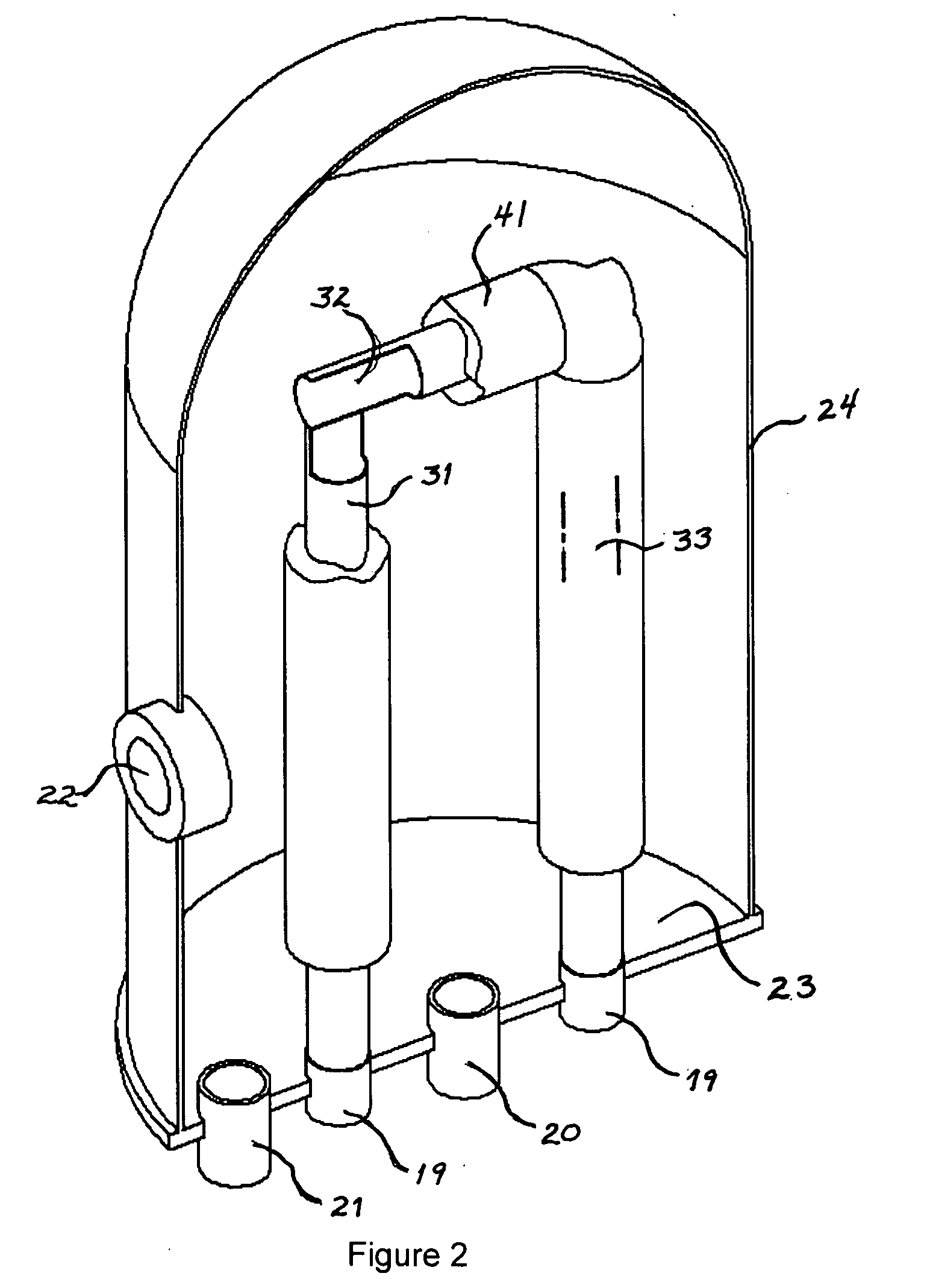Increased polysilicon deposition in a CVD reactor
a cvd reactor and polysilicon technology, applied in the direction of silicon compounds, crystal growth processes, coatings, etc., can solve the problems of high cost of the reactor system, achieve the effect of reducing the voltage needed, simplifying the power supply and control circuit, and reducing the cost of the subsystems of the cvd
- Summary
- Abstract
- Description
- Claims
- Application Information
AI Technical Summary
Benefits of technology
Problems solved by technology
Method used
Image
Examples
Embodiment Construction
[0028] The invention is susceptible of many variations in form and practice. Accordingly, the figures and following description of embodiments of the invention are to be regarded as illustrative in nature, and not as restrictive.
[0029] According to one embodiment of the invention, shaped silicon filaments are used to replace the conventional slim rods in a CVD reactor for making polysilicon. Referring to FIG. 2, one embodiment of the invention utilizes one or another of silicon tube filament sections 31, 32, 33 as the starting filament shape in a CVD reactor adapted accordingly, replacing the silicon slim rods 1, 2, and 3 of FIG. 1 in the analogous conventional CVD reactor. Filament sections of other cross section shapes, where the shape yields a significantly larger available surface area for deposition than a solid core slim rod, are within the scope of the invention. Filament sections may be of a mix of cross section shapes, such as a flat or ribbon filament bridge section conne...
PUM
| Property | Measurement | Unit |
|---|---|---|
| Thickness | aaaaa | aaaaa |
| Diameter | aaaaa | aaaaa |
| Diameter | aaaaa | aaaaa |
Abstract
Description
Claims
Application Information
 Login to View More
Login to View More - R&D
- Intellectual Property
- Life Sciences
- Materials
- Tech Scout
- Unparalleled Data Quality
- Higher Quality Content
- 60% Fewer Hallucinations
Browse by: Latest US Patents, China's latest patents, Technical Efficacy Thesaurus, Application Domain, Technology Topic, Popular Technical Reports.
© 2025 PatSnap. All rights reserved.Legal|Privacy policy|Modern Slavery Act Transparency Statement|Sitemap|About US| Contact US: help@patsnap.com



